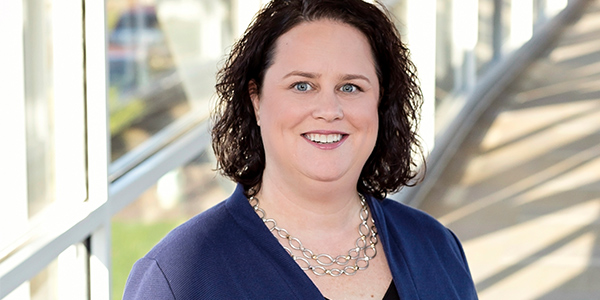Two recently announced special transmission planning efforts could have MISO members soon stringing miles of new wires across the footprint.
Stakeholders heard last week that a recently announced long-term transmission plan may result in project approvals as early as late 2021. At the same time, MISO and SPP will partner on an extra study focusing on transmission projects that could bring more of the renewable generation in the RTOs’ interconnection queues online. (See MISO, SPP to Conduct Targeted Transmission Study.)
Jennifer Curran, MISO’s vice president of system planning, said during the Board of Directors’ teleconference Thursday that while member companies’ renewable transition plans are disparate, stakeholder attitudes have shifted in favor of new transmission to support the metamorphosing generation portfolio.
“I think in our stakeholder community, we’re in quite a different place, even from a year ago,” Curran said. “Not all stakeholders are enthusiastic about new transmission … but we have received a lot of letters, feedback [and] emails from stakeholders saying, ‘Yes, it’s time to get going.’ 2030 is the equivalent of tomorrow when you’re talking about long-term, large-scale transmission projects. The work must begin today.”
MISO in mid-July confirmed it will undertake a series of long-range transmission planning studies under its annual transmission planning cycles. (See MISO Foresees Massive Shift to Renewables by 2040.)
Curran likened long-term planning to considering buying a new car rather than replacing a high-mileage car’s bald tires and fixing an oil leak. Long-term projects will not be approved en masse in a special portfolio, but under different annual MISO Transmission Expansion Plans, she said.
“With the Multi-Value Projects, it took four or five years to decide on projects for board approval. I just don’t think we have that kind of time here to bring projects forward for approval in 2025,” Curran said during the board’s System Planning Committee meeting Sept. 15.
From 2020 to 2022, MISO expects members to bring more than 25 GW in new generation online. That number pales in comparison to the 756 projects, totaling 113 GW, currently awaiting interconnection in its queue. (See MISO Processing Heftiest Interconnection Queue Ever.)
Curran acknowledged it will be challenging to find that “just-right, Goldilocks” level of long-term project approvals.
MISO and stakeholders will also work on cost-allocation processes next year as more immediate project needs emerge, she said.
The Organization of MISO States last week announced it has formed a special committee to examine and advise MISO on possible cost-allocation methods for long-term transmission projects. The special committee will be helmed by Indiana Utility Regulatory Commissioner Sarah Freeman.
Curran said the regulators’ perspective on cost allocation will be invaluable to MISO.
Teamwork with SPP
In a first, SPP CEO Barbara Sugg joined the MISO board’s virtual meeting on Thursday to discuss the RTOs’ increasingly crowded generation interconnection queues, the catalyst for the new joint study.
“SPP and MISO are such similar organizations dealing with such similar issues. … Our interconnection queue certainly draws the most criticism in SPP, and I’d wager MISO gets its share of criticism too. I think there’s no better time to collaborate and work together,” Sugg said.
“We thought about those queues … and how to make a difference for both of our members,” MISO CEO John Bear said in agreement.
MISO Executive Director of System Planning Aubrey Johnson said the study will likely last a year and is meant to identify project opportunities that wouldn’t be unearthed in the RTOs’ coordinated system plan studies.
Sugg gave MISO staff her “heartfelt thanks” for joining forces with SPP to possibly plan transmission together.
MISO Board Chairman Phyllis Currie said it was refreshing to see the cooperation between the two RTOs.
“I think her presence today says a lot about the level of commitment,” Currie said of Sugg’s address.
“Meeting after meeting, I’ve heard from our stakeholders that we need to do something about our seams issues. I hope this is evidence that we hear you,” Currie told stakeholders. “We can’t solve all seams issues, but I think it’s important we show that we’re listening to concerns.”
Director Baljit Dail said the “fantastic” teamwork between MISO and SPP was difficult to imagine more than a decade ago when he joined the board. “It may have taken a bit of time to get there, but we got there,” he said.
Clean Grid Alliance’s Beth Soholt also commended MISO and SPP for agreeing to the “important undertaking.”
Director Mark Johnson asked that MISO executives update the board on the study’s progress during the March quarterly board meeting.





